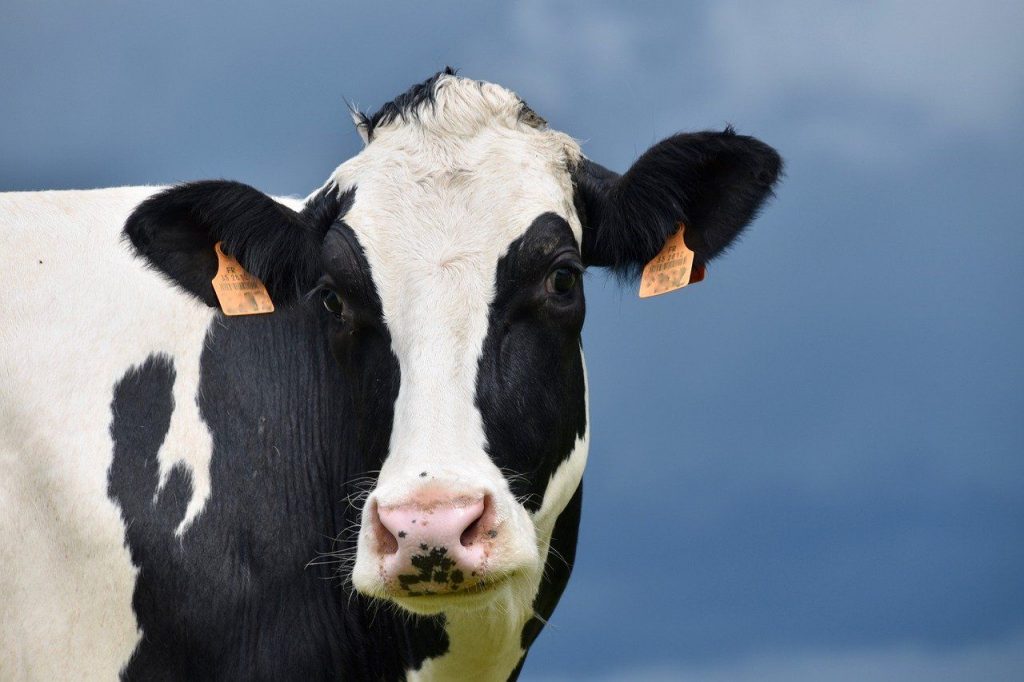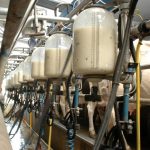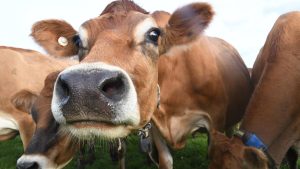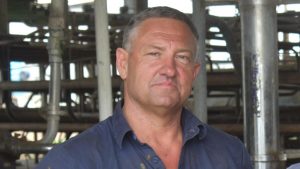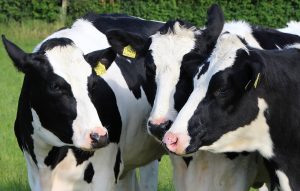
In the September 2021 Situation and Outlook Report, Dairy Australia praises low water prices, a feed surplus and strong farm gate milk prices.
The outlook is so positive it’s almost hard to find a negative, but the unstable global economy is worrying analysts.
Dairy Australia senior industry analyst Sofia Omstedt said globally the Delta variant was taking a toll, particularly when parts of South-East Asia and mainland China were locked down and commodity values fell.
Thankfully, steady demand from the Middle East, North Africa and other parts of Asia offset these tumbles.
Freight is another big concern.
“As dairy demand moves back into a growth phase, freight is the new challenge as shipping congestion continues to worsen,” Ms Omstedt said in the report.
“Extended delays, bottlenecks and surging export costs and ships bypassing scheduled ports altogether are now standard features of international trade.”
Remaining on the global stage, US dairy farmers will be ramping up milk production despite dry weather and mounting feed costs — thanks to a new subsidy scheme.
There is little relief on the horizon for American feed costs with poor US corn crops and the failure of Brazil’s safrinha corn crop.
New Zealand — which achieved ‘peak cow’ in 2019 — is on track to produce another record amount of milk thanks to good weather and boosts to their per-cow yields.
In contrast, hot weather in Europe has seen production falter over summer, off-setting the US and NZ increases.
In the European Union, milk prices are barely keeping up with the rising input costs, according to Rabobank — which said margin pressure was “creating headwinds” in the US and EU.
Australian milk production is expected to increase by zero to two per cent — taking the milk pool to about nine billion litres.
Rabobank forecasts milk production growth of 1.5 per cent in 2021-22 — returning national supply to 8.2 billion litres, a level not seen since 2017-18.
Milk flow is expected to accelerate as farmers focus on calving and the spring flush.
Rabobank’s Global Dairy Quarterly report for September 2021 echoed Dairy Australia’s concerns around global demand.
The report said any risks to the dairy market will likely stem from China, where supply is expected to outpace demand soon.
“As domestic production and inventories increase (in China), the country’s imports are expected to start to decline in the second half of this year,” the report said.
“Global markets may be able to absorb lost sales through 2021, but pressure will be felt in 2022, initially in Oceania, but eventually rippling through global dairy markets.”
Rabobank said the “near-term peak” in global dairy prices was “likely behind us”.
Water costs are expected to stay down thanks to a wet weather outlook, high water storages and carryover volumes.
On September 15, the Broken, Bullarook and Campaspe systems all reached 100 per cent high-reliability allocations.
Source: https://nvrm.net.au/
Northern Victoria resource manager Mark Bailey said local catchments were responding well to the rain in early September.
“The volume of water in storage increased and higher tributary flows downstream of the storages met demand,” Dr Bailey said.
The current outlook suggests seasonal determination for high-reliability water shares could reach 100 per cent for all southern water systems as early as mid-December.
Stockfeed is an interesting factor. There will be a surplus, but high-quality feed will be hard to get.
The feed market is currently inundated with weather-damaged fodder and many hay growers have scaled back their production due to concerns regarding export markets (China failed to renew 28 exporting licences in March).
The smaller quantity of hay produced this season will likely have little impact, considering many growers are still struggling to sell last season’s product.
The biggest cost currently is fertiliser, which is experiencing a global shortage.
China is the world’s largest exporter of urea and diammonium phosphate, but limited domestic production has seen the country stockpiling what it has for domestic use.
India, the biggest importer of urea, completed several tenders between March and August, which pushed global prices 106 per cent higher.
Since then, overall demand has been quiet but prices are unlikely to drop until supply improves.
Waterlogged paddocks are also reducing the windows some farmers have to complete spraying and fertilising, causing some concern for grain and fodder crop quality in Tasmania, Gippsland and Western Australia.
Drought in the Northern Hemisphere means grain prices are rallying and the softening Australian dollar means importers will find Australian grain an attractive option.
Domestically the surplus of home-grown feed will temper grain prices.
